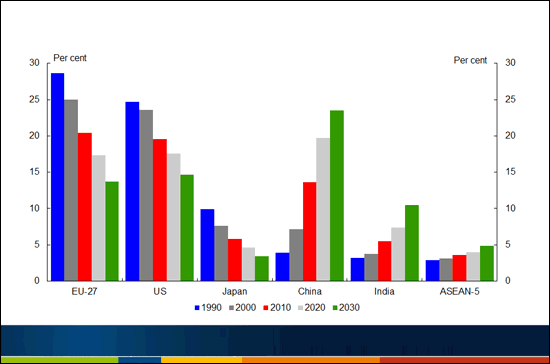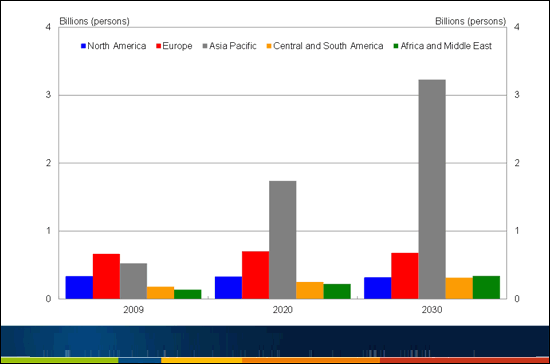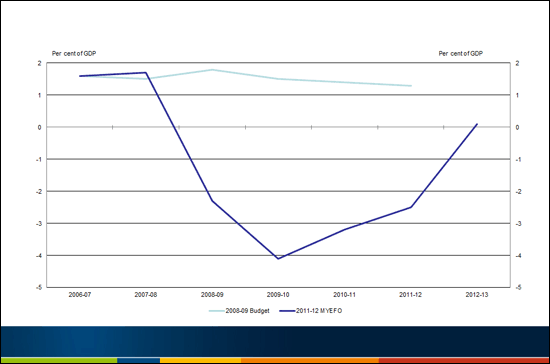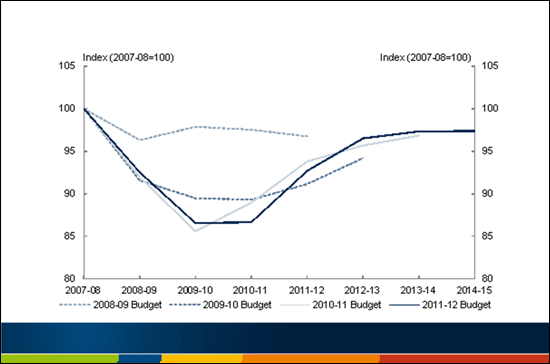Downloads
Introduction
It's a pleasure to be here.
I'd like to talk about a subject that always provokes debate and discussion - tax reform. If there is one thing we can take from the experiences of the last few years, it's that there are just about as many views on what needs reform as there are people who pay tax.
It goes without saying that many people do not like paying tax. No matter what we do with the tax system, that isn't going to change.
But that doesn't mean that taxes should impose unnecessary costs on taxpayers. How we go about tax reform can have real benefits for the community. In particular, well designed tax reform can help to improve labour productivity, and can also help to reduce the impact of the tax system on decisions to work, save and invest in Australia.
To properly frame this discussion, I'd like to mention some relevant elements of the international context and our domestic fiscal context before outlining directions for tax reform coming out of the Government's consideration of the Australia's Future Tax System Review (or AFTS), and more recently out of the Tax Forum.
Fiscal context
International context
The re-emergence of China and India into the world economy, and the shift in the economic centre of gravity from West to East this has created, could well be the dominant factor in shaping the industrial structure of the Australian economy over the coming decades.
In recent years, the relative strength of developing economies in Asia has been particularly apparent when contrasted to disappointing growth in advanced economies following the global financial crisis. However, this relative strength is not just a post-crisis phenomenon.
Between 2001 and 2007, developing economies on average contributed around two-thirds of annual global growth - up from less than one-half in the 1990s.
And between 2011 and 2016, the IMF is forecasting that around three quarters of global growth will come from developing economies on average, with most of this expected to come from emerging Asia.
Chart 1: World GDP projections

Note: Purchasing power parity adjusted GDP. ASEAN-5 comprises Indonesia, Malaysia, The Philippines, Thailand and Vietnam.
Source: The Conference Board Total Economy Database, Maddison (2007), IMF World Economic Outlook Database, World Bank, OECD, United Nations Population Database and Treasury.
In 1990, China and India accounted for around one third of the world's population, but as we can see from the chart less than one-tenth of world GDP. Today, they account for around one-fifth of world GDP, even though world GDP itself has nearly doubled since 1990. By 2030, they are expected to account for around one-third of world GDP.
China is also forecast to become the largest economy in the world, eclipsing the United States, by 2016.
Our geographical location and significant natural resources leave us well placed to benefit from this extraordinary period of growth.
That rapid growth has driven demand for Australian resources and energy. While global supply has expanded rapidly, it has not kept pace with demand and prices have increased significantly.
Chart 2: Australia's terms of trade
(Index 1900-01 to 1999-00 = 100)

Source: ABS Catalogue Number 5204.0, RBA and Treasury.
As we can see from the chart, high commodity prices have resulted in our terms of trade hitting 140 year highs. They are around 75 per cent above the 20th century average. At least until recently , the Australian dollar has been trading near record post-float levels, largely reflecting these strong terms of trade.
Developing economies in Asia are not simply building new cities and infrastructure. They are also generating an expanding population of middle class consumers.
Chart 3: Projections of the global middle class by region

Note: The global middle class is defined as those households with daily expenditures between USD10 and USD100 per person in purchasing power parity terms. The lower bound is chosen with reference to the average poverty line in Portugal and Italy.
Source: Kharas, H, 2010, 'The emerging middle class in developing countries', OECD Development Centre, Working Paper No. 285.
On some projections there will be around 1.7 billion middle class consumers in Asia by the end of this decade and over 3 billion by 2030.
This offers a vast array of opportunities for Australian businesses - a massive potential market for exports, including education, high-end manufacturing, tourism and rural commodities.
Taking advantage of these opportunities requires businesses that are innovative, willing to develop and test new products, and keen to invest in new skills and new ways of doing business.
Public policy also has a part to play, and I will have more to say on how tax reform can help remove impediments to innovation later in this presentation.
And this may prove particularly important, as the re-emergence of China and India particularly is only in its early stages.
Chart 4: GDP per capita
(Per cent of OECD -15 average)

Note: OECD-15 = Australia, Austria, Belgium, Denmark, Finland, France, Iceland, Ireland, Netherlands, Norway, Sweden, Switzerland, UK, US and Canada.
Source: The Conference Board Total Economy Database and Treasury.
I am not suggesting that China and India are likely to enjoy uninterrupted growth, somehow avoiding the volatility that has marked economic growth in the developed world. Nor am I suggesting that living standards will converge without thought or effort to advanced economy levels.
However, the experiences of several important success stories in the region suggest that, barring major social dislocation, China and India should still have a lot of growth ahead of them.
This is, however, certainly not to say that neither Asia nor Australia are immune from the ongoing turmoil in the US and, especially, Europe.
Australian context
I will turn now to discuss the Australian fiscal position in the context of those ongoing developments, both positive and negative, overseas.
The recently released MYEFO shows deterioration in tax revenue of the order of $140 billion over the five years to 2012-13 compared to 2008-09 estimates. Accordingly, the fiscal circumstances that exist now are very different to the ones we expected to face in 2008, when the AFTS got underway.
Chart 5: Underlying cash balance

Source: Treasury estimates.
The Budget is forecast for surplus in 2012-13, but the enormous hit to revenue from the global financial crisis can be clearly seen.
The key drivers of the hit to revenue are the buffeting of the economy by the natural disasters in early 2011, a strong dollar, and the hangover effects of the global financial crisis.
The effects of the global financial crisis can be clearly seen in the stronger household savings rate, the emergence of the 'cautious consumer' with
subdued household demand.
The stock of accumulated losses for businesses is also larger than anticipated, and will take years to work through the tax system.
And in the recent MYEFO, weak asset prices led to a downgrade in capital gains tax forecasts of $7 billion over the forward estimates.
Chart 6: Tax to GDP ratio projections

Source: Treasury estimates.
As we can see, tax as a share of GDP has remained below the bar set in 2007-08, which is consistent with the Government's commitment.
A key attribute of any tax system is whether it provides stable, sustainable revenue so the Government can do its job. This means that any tax reform must be done in a way that acknowledges the fiscal environment we find ourselves in.
Of course, despite the immediate challenges to the budget position, Australia enjoys a strong overall fiscal position.
Our net government debt is low, and expected to remain so. The 2011-12 MYEFO projects net government debt to peak at about 8.9 per cent of GDP. This contrasts starkly with the average net government debt of the G7 economies, expected to reach 92.9 per cent of GDP in 2016.
Our sound public finances are reflected in the recent upgrade of Australia's credit rating to AAA by Fitch Ratings.
Our unemployment rate is similarly low, and stable.
Inflation, after showing signs of accelerating outside the Reserve Bank's target range of 2 to 3 per cent, has slowed and is projected to remain within that range over the medium term.
However, the dollar has spent considerable time well above parity with the US dollar in recent times.
While this benefits many in society, it has contributed to difficulties across a range of sectors - tourism, education and some areas of manufacturing particularly have found themselves in challenging circumstances.
And, as I referred to previously, the emergence of the cautious consumer has added concerns to parts of the retail sector.
As we contemplate these current pressures, we should not forget the looming challenge of an ageing population. The 2010 Intergenerational Report again brought into focus that, on current trends, spending on existing programs will become unsustainable over the medium to long term.
The report estimates that there will be just 2.7 people of working age to support every person over the age of 65 by 2050, compared to 5 people in 2010.
Real GDP growth per person is projected to slow to an average of 1.5 per cent per year over the next 40 years.
An increasingly large population of older Australians is expected to contribute to a substantial rise in Commonwealth Government spending as well.
The key message taken from all three intergenerational reports is that, apart from the need for continued vigilance in the relevant outlays, attention needs to be given to increasing the size of the economy through increasing labour force participation and improving labour productivity.
And it is with respect to these two policy imperatives, together with the need to provide stable, secure revenue for the Government, a number of tax initiatives have been progressed.
Australia's Future Tax System Review
The Australia's Future Tax System Review, or AFTS, was a recommendation of the Australia 2020 summit held in 2008. It was the most comprehensive inquiry into Australia's tax system ever undertaken. I had the extremely good fortune to lead the Review's secretariat.
The report, handed to the Government in December 2009 and released in May 2010, laid the groundwork for a series of subsequent reforms. In all, it contained 138 recommendations.
Some of those have been ruled out by the current Government, but many more have been acted on or remain on the table for future reform.
Indeed, over 30 measures have been introduced by the Government since the tax review, acting on its recommendations.
The Treasurer has noted that tax reform is a long term proposition and not something that could be achieved without regard to either fiscal circumstances or community concerns.
On top of its specific recommendations, the final report contained a broad direction for the tax system over the coming decades. This was intended to allow the tax system to be flexible and adapt to a changing global environment, while maintaining cohesion and supporting the Australian community.
The Stronger, Fairer, Simpler package was announced by the Government at the same time as the release of the report.
The main features of this package were a profit-based tax on mineral resources, cutting the company income tax rate and simpler and more generous depreciation arrangements for small business.
Further measures in the 2010-11 Budget included the introduction of the standard deduction for work related expenses, introduction of the 50 per cent discount on interest income and the phasing down of interest withholding tax paid by financial institutions.
The 2011-12 Budget
The next major stage of tax reform came about with the 2011-12 Budget.
This Budget was an exceptional one for tax policy.
Long standing issues, many noted in AFTS but hardly newly discovered, such as the perverse incentives created by the fringe benefits tax treatment of cars, were addressed and rectified.
A number of measures dealt with specific AFTS recommendations, especially in relation to improving labour force participation incentives for dependent spouses, parents, youth and the disadvantaged, and the move towards abolishing some tax offsets.
Some ineffective policies were scrapped, like the Entrepreneur's Tax Offset to be replaced with policies that provided clearer, more useful incentives.
This Budget was closely followed by the release of the Clean Energy Future Package, which was again consistent with AFTS recommendations.
It contained some fundamental shifts in the structure of personal income tax. The tax free threshold was trebled, and most of the Low Income Tax Offset (LITO) rolled into it.
Low income earners and those only marginally attached to the labour force are big beneficiaries of these changes. With more money flowing through take home pay and not having to wait until tax return time to receive the benefit of the LITO, incentives to participate in regular employment are increased.
Another significant benefit of this change is that large numbers of low income earners, estimated to be more than one million by 2015-16, will no longer need to go to the trouble and expense of filing a tax return.
Tax Forum
And so we came to the Tax Forum.
The Tax Forum should be seen as a part of the continuing national debate on our future tax system sparked by the release of the AFTS report.
In that sense, its achievement of gathering together so many widely disparate views into one room and holding a sensible, thoughtful discussion is remarkable.
The discussions at the Tax Forum highlighted some areas of agreement, and even of near consensus, as well as significant areas of disagreement. Understanding those different points of view is a key to successful reform, and the willingness of participants at the forum to put across their views allowed all sides of many of the big issues to be examined.
In doing so, it helped to identify those areas where action needs to be taken, those where further discussion and research are needed, those where the way is mostly clear to really get something done, and the obstacles that stand in the way of other potentially worthwhile reforms.
For example, the Tax Forum understood that there should not be barriers to businesses attempting to restructure in the face of a rapidly changing economic environment, and nobody was willing to defend the existence of state insuran
ce taxes and certain stamp duties from a policy perspective - rather it was the path to reform in this area that was the issue for debate.
When it came to some other taxes, such as company income tax reform, there were more divergent views.
In particular, there was disagreement among participants about the potential long run benefits of reductions in company tax rates, whether such reductions would lift investment and productivity and thereby the wages of Australian workers, and how cutting company tax rates compares to other interventions to lift productivity.
The ideas and issues raised in the Tax Forum have fed into an extensive program of work, and no doubt will inform the thinking in policy circles for some time to come.
Work going forward
The next phase of tax reform will build on those discussions at the Tax Forum, and the work that arose from them.
It will aim to balance the desire of Australians, as shown at the forum, to have a better tax system, with the fiscal constraints the Government is under.
A notable theme from this work is the attention shifting to reforms that might alleviate the negative effects on productivity that many taxes have.
In particular, the Business Tax Working Group was set up by the Treasurer to look at a range of ways the tax system can be used or improved to increase productivity, meet the challenges facing Australian businesses in a volatile economic environment, and to make the most of opportunities that come their way.
Reflecting the benefits delivered by the Forum of having a diversity of views represented, the Working Group is comprised of people from a range of backgrounds, including representatives of business groups, trade unions, tax and legal practitioners and academics - and me.
We are also receiving high level assistance from the ATO.
This broad representation and range of backgrounds will provide the range of perspectives that is necessary to enable the Government to achieve substantial and long lasting tax reforms that benefit both businesses and the wider community.
The Treasurer has made it explicit that the Working Group should examine ways to enhance productivity through changes to the tax system.
The mechanics of improving labour productivity through changes to company tax arrangements are sometimes unclear. Let me make a few observations on this.
Labour productivity can be increased by capital deepening - the tools, equipment and ICT available to people in their work - and by improvements in multi-factor productivity - which in practice reflects the benefits of innovation and technological change not embodied in the capital, better ways of doing things including more efficient markets, less distorting taxes, better management of firms and improvements in skills and education.
In a relatively small capital importing country like Australia, the company income tax acts as a tax on investment and increases the rate of return necessary for investments to go ahead compared with investing in other countries. This could discourage some otherwise worthwhile investments, reducing the capital available to workers and so affecting labour productivity and ultimately reducing real wages compared with what they could have been.
A reduction in company tax can therefore make Australia more competitive in the global market for investment, resulting in increased investment, which leads to capital deepening and improvements in labour productivity.
However, the company income tax also acts as a tax on economic rents, or returns above normal profit, including location specific rents, such as rents derived from natural resource endowment as well as legislated and natural monopolies.
The public economics literature is very clear that taxes on location specific economic rents are generally efficient, producing much less distortion in business decision-making than a tax on normal profit. This is the reason for the introduction of the mineral resource rent tax.
'Rents' is an esoteric term for most people, including for we in Treasury.
But the nub of the idea is that there are some projects or investments that are socially worthwhile before tax, but don't offer such a high rate of return that they will proceed if company income tax is applied. It is better not to tax these break-even projects if we can.
There are other projects where the before tax rate of return is sufficiently high - because of some advantage obtainable only from investing in Australia - that they will go ahead despite company income tax applying. Taxing these will provide the revenue we need without affecting the level of investment.
Unfortunately, location specific economic rents are difficult things to observe and target.
So while shifting to more taxes on location specific economic rents and less on normal returns to investment is appealing, there are many practical issues to grapple with.
That doesn't mean it shouldn't be done, of course. And the model recommended for the UK in the Mirrlees report from the Institute for Fiscal Studies - an Allowance for Corporate Equity - offers some prospects.
However, in the absence of a shift to taxing economic rents, company income tax acts as the only readily available tax on the economic rent component of business profits. A reduction in the company income tax rate as a way to boost productivity then becomes a far more contestable proposition, especially as the tax revenue foregone by a company income tax cut needs to be made up from other sources.
Over the coming months, the Working Group will be examining whether it is desirable to adopt an allowance for corporate equity, how it might work in Australia, and whether it could be an alternative to reducing the company income tax rate. As well as potentially aiding capital deepening, an Allowance for Corporate Equity may also improve multi-factor productivity by making redundant many of the distortions and complexities in the tax system arising from necessarily imperfect write-off arrangements, timing issues and debt-equity distinctions.
For multi-factor productivity, another relevant factor is appropriate entrepreneurial risk taking. In the context of an economy undergoing structural change and needing to improve its labour productivity, worthwhile risk taking and entrepreneurship will be essential if businesses are to restructure and invest in new products and business strategies that will drive those improvements.
Here the current treatment of losses might be relevant and the Working Group has been asked to specifically address this issue.
At present, the tax system treats profits and losses asymmetrically. Profits are normally subject to taxation in the period they are earned, while tax refunds are not provided for losses in the period they are incurred.
Under the Australian tax system, losses can be carried forward indefinitely and offset against future income, subject to a range of integrity rules. However, they are carried forward without indexation for inflation, so their value declines over time.
Access to losses is also limited by the integrity requirement for businesses to maintain the same substantial ownership or, if not, to carry on the same type of business.
Economic literature suggests that this asymmetry in the tax treatment of profits and losses might bias investors away from otherwise worthwhile risks. It can impose a bias away from investing in higher risk investments that have a higher probability of making a loss.
There are many ideas for reforming the tax treatment of losses. These include revisiting current restrictions on the utilisation of tax losses, indexing them as they are carried forward and allowing losses to be carried back against past income.
Although care will be necessary to maintain the integrity of the tax system, all these ideas are worthy of further consideration, with the aim of improving multi-factor productivity firmly in mind.
The Working Gr
oup will soon provide to the Treasurer an interim report on the current treatment of business losses and will also be undertaking broad public consultation on these issues.
Outside this process, Treasury, the Australian Tax Office and the Council for Small Business representatives are working together to find ways to make life a bit easier for the millions of small businesses in Australia.
Business tax isn't the only area things are happening, of course.
Other outcomes from the Tax Forum include:
- a renewed vigour on the part of the States to drive the next stage of State tax reform;
- the commitment to funding a Tax Studies Institute;
- consideration of changes to superannuation to allow retirees to better manage their super over the course of their lives; and
- some changes to the tax treatment for Not-For-Profits to better support this sector.
So as you can see, there's a lot there. And what is there covers a huge range of issues.
Nobody expected to walk out of the Tax Forum with a freshly redesigned tax system ready to go.
But what we did walk out of the forum with was a real sense of the ways we can work to drive forward necessary reforms.
Conclusion
Tax reform is the sort of subject that always provokes a debate.
It's often the sort of debate that needs to be had though.
The importance of a mature, thoughtful debate on appropriate reform to the tax system is necessary for securing community support .
The Government has kicked off such a debate in this country, and has followed up with a range of actions to reform our tax system.
The Tax Forum provided an opportunity for many of Australia's leading voices in a range of fields to contribute to that debate, and to help set the future agenda.
While the international economy and the domestic fiscal constraints need to be front of mind, the work that arose from the Tax Forum discussions holds significant promise to produce a better and fairer tax system, and to provide a sustained means of building the case for continued reform.
Thank you.